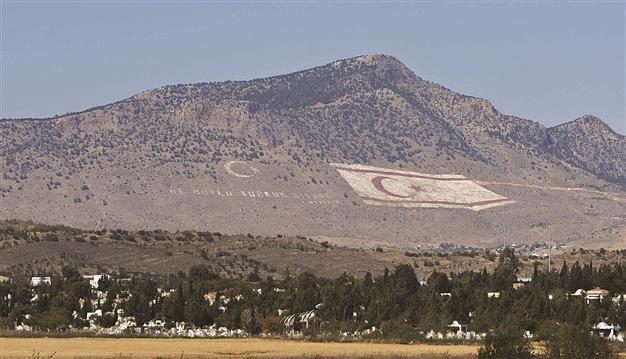War for Cyprus still going in school books 40 years on
NICOSIA - Agence France-Presse

Mountains in Turkish Cyprus are seen from Nicosia. Turkish Cypriots will celebrate the Peace and Freedom Day on July 20, with Turkish President Abdullah Gül attending for the last time as president.
Forty years after the division of Cyprus, Greek and Turkish Cypriot schoolchildren are still being taught separate narratives of their shared legacy of pain.
On July 20, 1974, the first Turkish troops landed on the north coast at Kyrenia, with the declared aim of protecting the Turkish Cypriot minority after a coup to unite the island with Greece.
The coup failed but within weeks Turkish soldiers had intervened and seized 37 percent of the Mediterranean island.
Greek Cypriot authorities say the one-sided conflict against Turkey cost 3,000 lives and injured thousands of others, while 1,619 people were reported missing. Two quite different accounts have clashed ever since in the history books of the rival communities, torn apart by the invasion. For Greek Cypriots, 1974 and the ongoing occupation by tens of thousands of Turkish soldiers lie at the heart of the conflict, whereas for many Turkish Cypriots it was a “peace operation,” as Ankara still officially describes it.
“Two completely different meanings. This is reflected in history programs on the two sides,” said Tahir Gökçebel, the teachers union head in Turkish Cyprus.
“Both communities lived together for 500 or 600 years. They had weddings, celebrated events, shared the same bazaars and their daily lives together. Yet none of this is in the school textbooks,” said the history teacher. There is another fundamental difference. For Turkish Cypriots, the conflict dates back to intercommunal clashes between December 1963 and January 1964, violence which accounted for most of the almost 500 Turkish Cypriots listed as missing.
Rise of fear and distrustThis gulf in how the conflict is perceived gives rise to fear and distrust. “Look at ELAM,” said Gökçebel, referring to the ultra-nationalist fringe group modelled on Greece’s Golden Dawn, which has a following among Greek Cypriot youths.
“How can such young people hate other people that they have never known?” he asked. “It’s about education... because if we teach them that the other side is the enemy, then they will hate each other.” Kyriakos Pachoulides, a Greek Cypriot history professor who heads an Association for Historical Dialogue and Research, echoed his views. “The new generations grew up with mono-ethnic narratives, mono-logical perspectives of what happened in 1974 and 1963. And they, of course, cannot avoid stereotyping the other, as the enemy, as the barbarian,” he said.
Petros, a 21-year-old student, remembers only too well his history books at school with their pictures of the now Turkish-held towns of Famagusta, Kyrenia and Bellapais in the north.
“I do not forget,” the captions read. Seated under the baking sun in a Nicosia coffee shop with friends, he spoke of how he discovered little by little that there was another way of seeing the past. Next to him sat Desiree, a Turkish Cypriot, and Andy, another Greek Cypriot. “All we were ever told was how heroic our heroes were,” said Andy. “We were never told about conflict between the communities, never.” Desiree said she was brought up on a diet of “Turkish nationalism” at school.
“We did not put into perspective the history that we learned. It was just the Greeks did this and that, and the Turks were victims. The victims were Turkish Cypriots and Turks came to save us,” she said.
Through bi-communal events, books and the Internet, said Andy, they discovered that “the other side has suffered too.”
At the official level, both sides try to monopolize victimhood.
Turkish Cypriots will celebrate the Turkish Peace and Freedom Day on July 20, while Greek Cypriot teachers were asked to bring in 1974 refugees to talk to pupils of their suffering.
